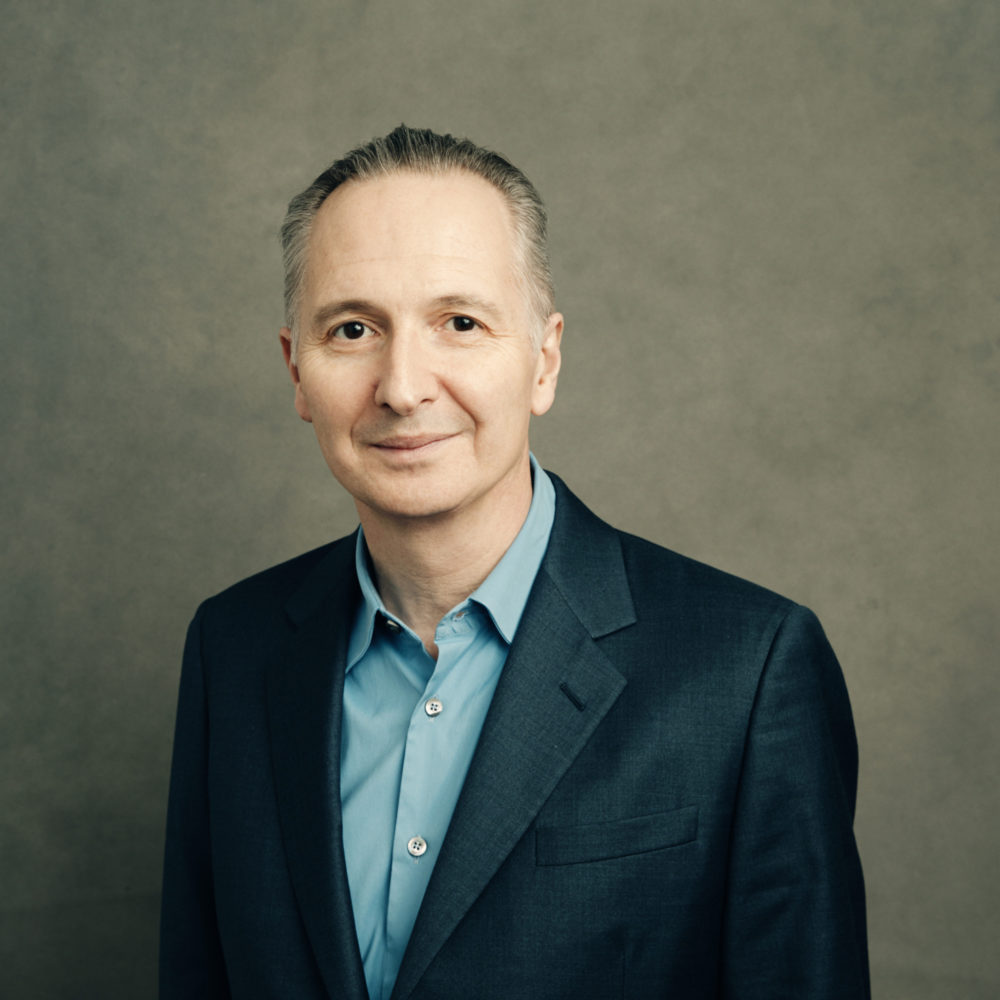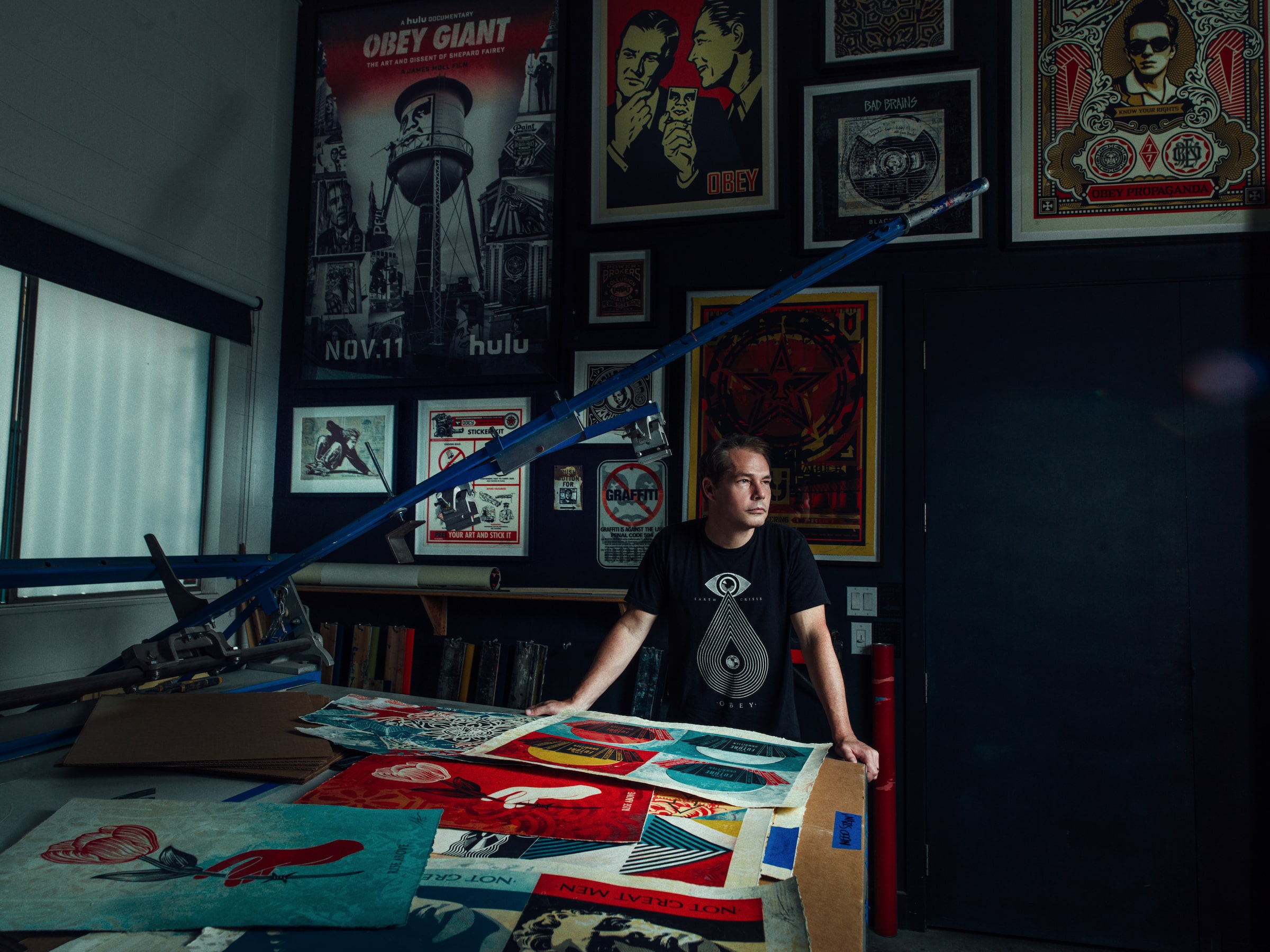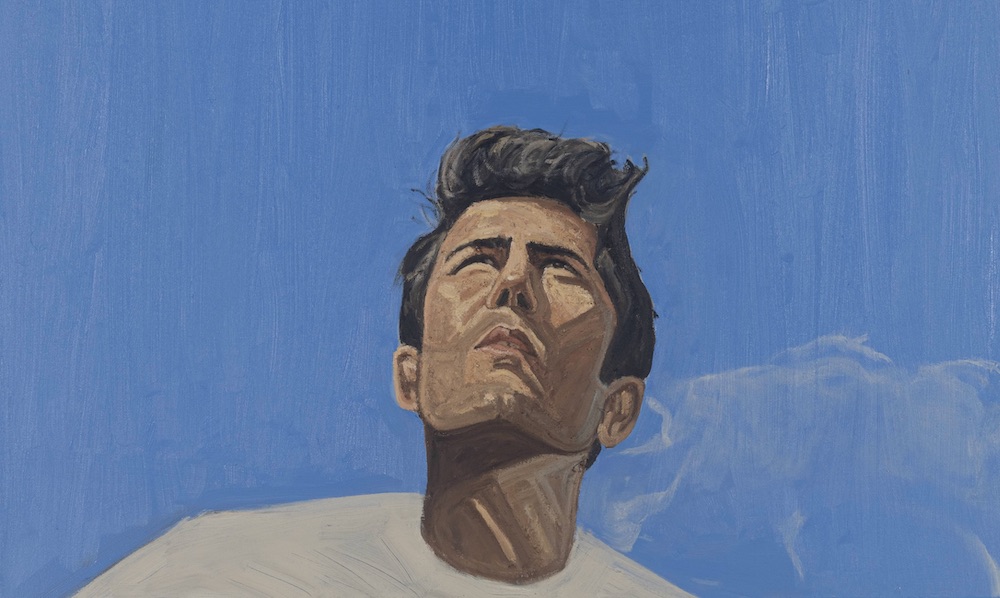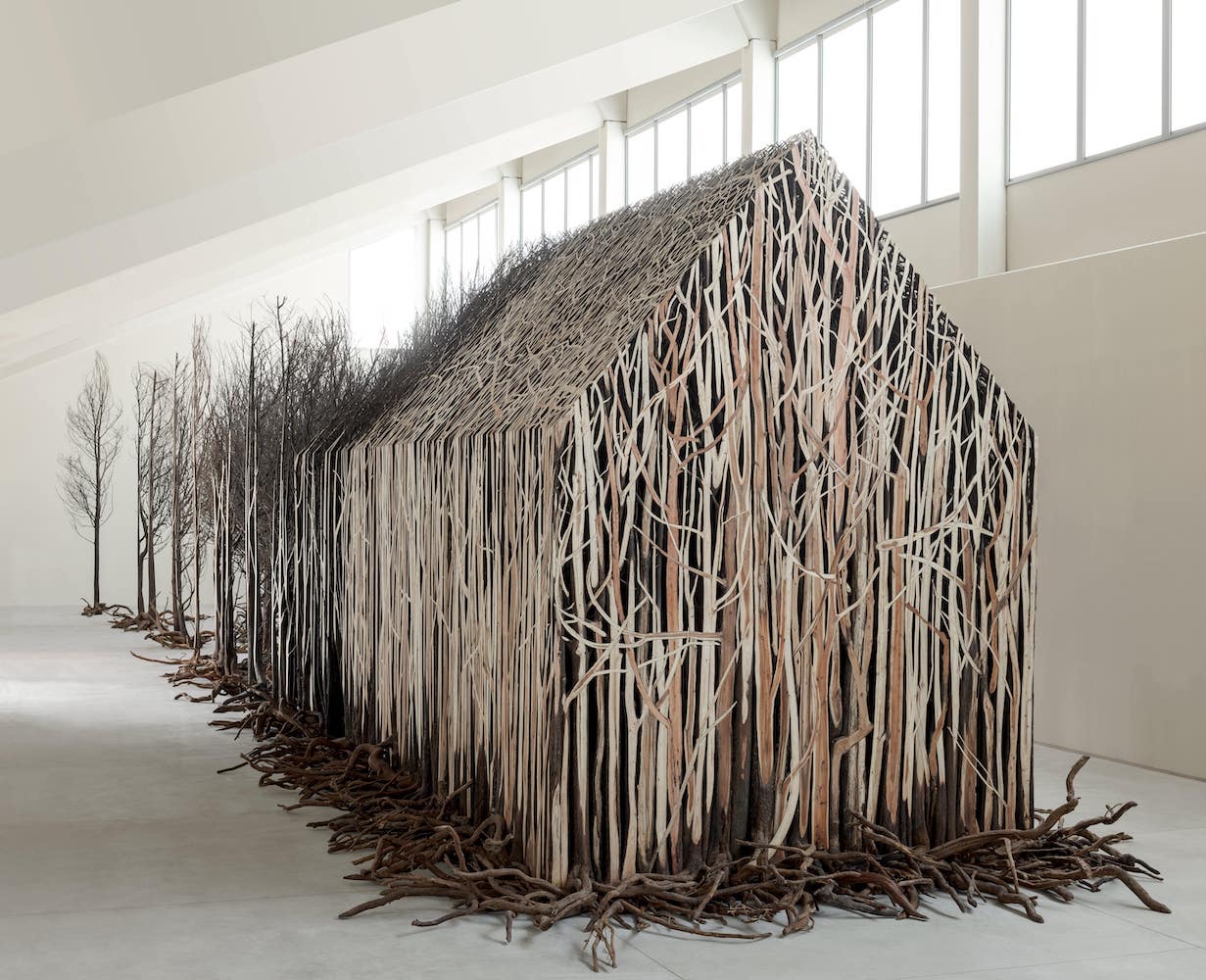The mixed media artist Lizzie Gill is typically in Brooklyn, creating from her studio. But today, amid the COVID-19 pandemic, she’s found herself back at her childhood home, isolated with her husband just outside of New York City. Adjusting to a new normal, she’s using her anxiousness to propel her creativity. “I never thought I’d be grounded again in my childhood bedroom, but here we are,” she said. “The angst is actually inspiring!”
During this time, she’s stayed connected to the outside world by using the app Houseparty—a platform that connects you to personal contacts who happen to be online at the same time for a quick chat. The name of the app sparked a larger project for her where she curated a selection of limited-edition prints in a series called “Houseparty” to auction off. 25 percent of the proceeds went to Fuel The Fight NY which provides meals from local New York City restaurants to those working to keep us safe.

Brett Gorvy, photo by Zenith Richards.
In response to the ongoing protests for equal justice sparked by the death of George Floyd, Gill is continuing to stand in solidarity with deep respect. Her latest work, Amplified Voices, memorializes Floyd and magnifies the message of racial equality.
Whitewall spoke with Gill about how art enables unity and what organizations she’s focused on supporting.
WHITEWALL: Your work has always been rooted in found imagery from the past, bringing it into the present. Can you tell us a bit about this?
LIZZIE GILL: I studied painting and photography, searching for a way to combine these disciplines brought me to mixed media. Moving to Brooklyn and collaborating with other artists was an important part of my journey. I managed an artist collective for a few years, curating and executing exhibitions in New York and abroad, which was a great experience and helped me formulate how to run my own studio.
WW: Where did your love of vintage and retro images come from?
LG: I think it derives from a love of the mid-century aesthetic combined with a hoarding tendency, which I think most artists can relate to. I used to love thrifting vintage clothes which brought me to a local vintage shop in Saratoga Springs, where I studied art at Skidmore College. I’d be in there every week, looking through the old magazines, which the owner always replenished regularly. It was such a wonderful shop, with rooms of vintage clothes piled high, knickknacks, and table-top treasures. He always had jazz playing, and I’d spend hours poring over the stacks of 1950s magazines looking for my next subject.
WW: How has your work evolved?
I have always worked with found imagery and collage is a base of my practice. But my work has evolved over the years from smaller works on paper into larger, mixed media works on panel. Conceptually it has expanded from a focus on digital romantic communications to the evolution of technology and how we interact.
WW: Tell us a bit about an average day in the studio.
LG: I work from home, which I think everyone now can attest to being a bit maddening at times, but it works for me. A lot of being an emerging artist is being an entrepreneur and owning your own business, so I usually do admin in the mornings (while the coffee is still working) and paint, or work in the silkscreen studio in the afternoon. If I’m working on an editorial deadline, that will be my day and sometimes night.
WW: Tell us a bit about what you’re creating right now.
LG: I’m creating collages and digital works—mostly editorial pieces, which is a part of my studio practice. Creating work for the New York Times and The Atlantic as news unfolds has allowed me time to sit with other people’s stories artistically. Doing so is a reminder to search outside my own experience, particularly when this disease has such a global reach.
WW: What are you listening to, reading, and watching? Are you cooking anything in particular?
LG: I’m listening to Tom Misch, reading Ninth Street Women by Mary Gabriel, and watching and all the “Harry Potter” movies.
I’m the salad-fixer in the group. I step in just before the end and whip up something to add green to the plate. I love making a kale and Brussels sprouts Caesar salad with tzatziki dressing. It pairs well with most dishes.
WW: Where are you finding hope or inspiration amid COVID-19?
LG: I’m finding hope in the resilience of the art world. Galleries creating digital exhibitions, artists showcasing artists, and the work being created during a time of upheaval. Artistically, I find inspiration in our evolving digital communications and decoding them with images from the past to create a future nostalgia.
WW: The last time we saw you, you had a solo show at PULSE in Miami. Since, you participated in an exhibition at Foley Gallery that highlighted women artists who utilize the female subject. Can you tell us a bit about the project you worked on since, with the Park Hyatt NY?
LG: This past winter I collaborated with the Park Hyatt NY on the exhibition “Source: Material,” curated by Samuels Creative. Drawing inspiration from vintage family photos and ephemera, I created a new body of work that evoked nostalgia for an earlier, glamorous era of New York viewed through the lens of the digital age.
My grandfather was a New York socialite during the 1930s, so I knew this was the project for the images of late nights at El Morocco and the 21 Club. We balanced the exhibition with artifacts from the era including telegrams he was sent, which became analogous to text messages. It was exciting for me to use these personal images to encapsulate a nostalgic time period in New York.
WW: At the turn of the new year, you created a cover for the The New York Times to celebrate the new decade. Can you tell us a bit about this image?
LG: This project was a bit of a dream as I was asked to collaborate with the New York Times Archives to create key illustrations for a commemorative publication, released to coincide with the centenary of the 1920s. Creating the artworks entailed poring over hundreds of incredible images to work with. The book is filled with The New York Times articles and photographs from the ‘20s covering the suffrage movement, prohibition and the jazz age. Definitely recommended reading!
WW: Are there any fellow artists that are particularly inspiring for you in your practice right now?
LG: I find the work of Njideka Akunyili Crosby inspiring. Her ability to make a multitude of images, patterns, and paint work cohesively in a single picture plane is a level of refinement I consider in my practice when I approach a new piece.
WW: In the past, you’ve stood in solidarity with women and people of color and pushed for their voices to be heard through your work. Can you tell us a bit how you feel today in regard to the racial justice protests happening all over the globe?
LG: It’s incredible what’s been happening, and I stand in solidarity with those fighting for racial justice and change. As an artist it is important to lend one’s ability to unify and amplify these voices artistically, as well as to make space for them. It is crucial for artists, whose work so often mirrors society, to create work that allows for reflection and deeper contemplation on these issues.
Education is important, and perhaps where we have the biggest opportunity to help reform systemic racism, of which police brutality is a byproduct of. I believe providing funding for both local and national youth programs is one of the many important calls to action to be considered.
I’ve been very inspired by this quote by Toyin Ojih Odutola: “…images can be noisy. But with art, it’s just you and this work. You’re in dialogue with it, and there’s no right or wrong way to engage. Art provides the opportunity for people to be still, to think and digest this moment and try to understand it.”
I’m supporting national educational reform-based organizations (like the Education for Liberation Network) and local education and youth reform-based organizations (like the Red Hook Initiative and the Brooklyn Youth Program).








